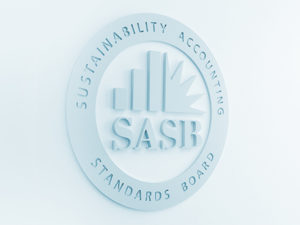Last month we celebrated the beginning of a new era as the IIRC and SASB officially merged into the Value Reporting Foundation, a clear response to calls for clarity and simplicity in the corporate reporting landscape. The Value Reporting Foundation is a global nonprofit that supports business and investor decision-making with three key resources: Integrated Thinking Principles, Integrated Reporting Framework and SASB Standards.
After the merger, we have received questions about how existing or prospective SASB reporters should refer to the SASB Standards, and whether the merger changes anything for them. We’re writing to provide clarity on the top three questions we’ve received.
Did the SASB Standards change as a result of the merger?
The short version: no! The long version: SASB Standards will continue to be set according to the principles, processes, and practices outlined in the SASB Conceptual Framework and Rules of Procedure. The SASB Standards Board—an independent board that is accountable for the due process, outcomes and ratification of the SASB Standards—is unchanged and will continue to play the same role. SASB Standards for 77 industries are still freely available for noncommercial use here. In fact, more businesses are using them than ever before. There are now close to 1,100 SASB reporters world-wide, almost double the 2020 total.
How should I refer to the SASB Standards after the merger?
The Standards continue to be called the SASB Standards. You can refer to the SASB Standards independently of the Value Reporting Foundation. If you wish to provide clarity about the link between the two, you can say that the SASB Standards are maintained by the Value Reporting Foundation. If you want to illustrate your use/support of the SASB Standards on your website or in a publication, please use this logo.
Do I now have to use the SASB Standards and the <IR> Framework together?
The Value Reporting Foundation will demonstrate / illustrate how the <IR> Framework and the SASB Standards may be used together and thus better enable organisations to plan and communicate value creation, preservation or erosion over the short, medium and long term. However, it is up to each business to select the appropriate reporting frameworks and sustainability standards, depending on business needs and user needs. Businesses can choose to use the
Thank you for your ongoing support as we evolve to better meet the needs of the market. Please don’t hesitate to contact us with any questions.
